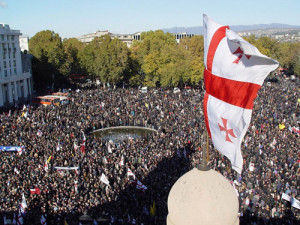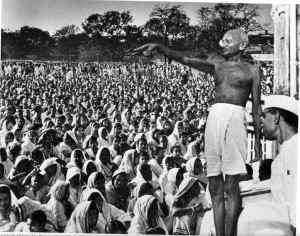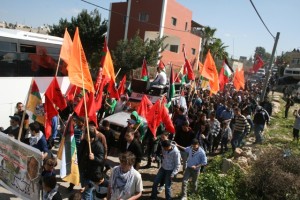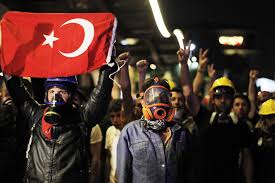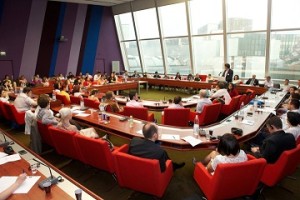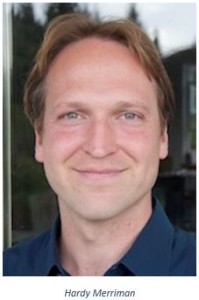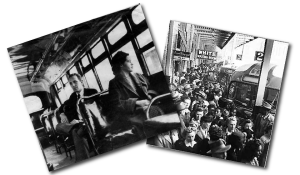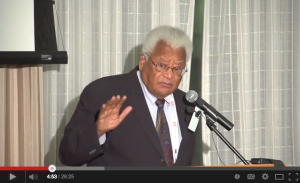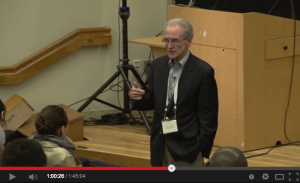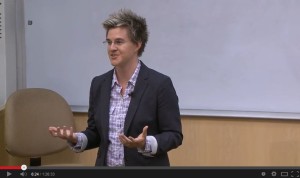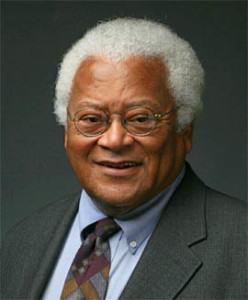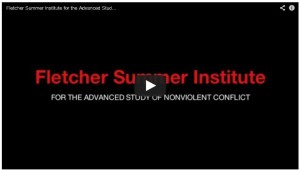By Ivan Marovic
Date of Publication: First edition, 2018 | Second edition, 2021
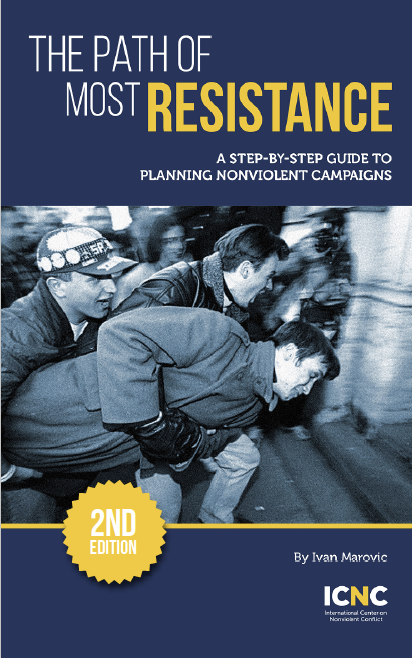
Free Download:
• Second edition: English | Farsi | Hungarian | Polish | Vietnamese
• First edition: Catalan | French | Portuguese (Brazilian) | Spanish | Urdu
Purchase a Print Copy:
• Second edition: English
• First edition: French | Portuguese (Brazilian) | Spanish
Purchase e-book (Nook | Kindle)
The Path of Most Resistance: A Step-by-Step Guide to Planning Nonviolent Campaigns is a practical guide for activists and organizers of all levels, who wish to grow their resistance activities into a more strategic, fixed-term campaign. It guides readers through the campaign planning process, breaking it down into several steps and providing tools and exercises for each step. Upon finishing the book, readers will have what they need to guide their peers through the process of planning a campaign. This process, as laid out in the guide, is estimated to take about 12 hours from start to finish.
The guide is divided into two parts. The first lays out and contextualizes campaign planning tools and their objectives. It also explains the logic behind these tools, and how they can be modified to better suit a particular group’s context. The second part provides easily reproducible and shareable lesson plans for using each of those tools, as well as explores how to embed the tools in the wider planning process.
The Second Edition released in March 2021 includes chapters on tactics and running a tactical planning workshop, and an Introduction by Hardy Merriman.
Watch the “Planning Nonviolent Campaign” Book Launch and Q&A Webinar
About the Author:
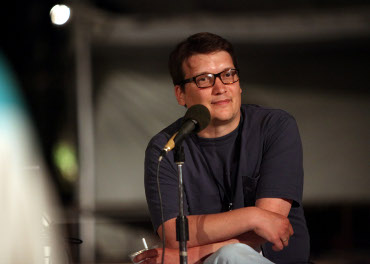 Ivan Marovic was one of the leaders of Otpor, the student resistance movement that played an important role in the downfall of Slobodan Milosevic in Serbia.
Ivan Marovic was one of the leaders of Otpor, the student resistance movement that played an important role in the downfall of Slobodan Milosevic in Serbia.
After the successful democratic transition in Serbia, Marovic began consulting with various pro-democracy groups worldwide and became one of the leading practitioners in the field of strategic nonviolent conflict.
What People Are Saying About the Book:
“Earlier this year, I had a webinar about social movements at Rhize, and Ivan was our lecturer. Check out his book about organizing resistance. Download is free today. Maybe you can start a campaign – it takes 12 h to plan one following these methods. #MakeChangeNow”
– Lu Yen Roloff, public Facebook post, October 25, 2018
“Downloaded my free copy yesterday. It’s a VERY thorough book on how to plan a nonviolent civil resistance campaign. It’s clear that an enormous amount of work went into writing & illustrating it.”
– Joel Preston Smith, Twitter, October 26, 2018
“I’m really happy to share Ivan Marovic new and free monograph on civil resistance from @civilresistance. Ivan is one of the best and most [strategically] innovative civil resistance activists and trainers I have had the honor of working with over the years.”
– Søren Warburg, Twitter, November 5, 2018
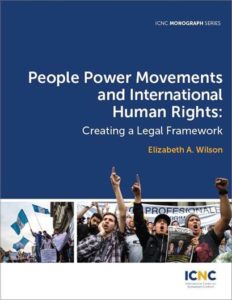

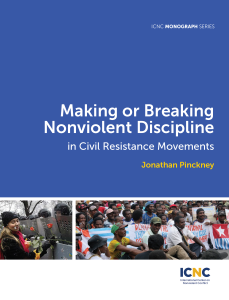 Abstract: New research has recently raised the profile of nonviolent civil resistance as a major and particularly effective form of political struggle. Yet the dynamics of nonviolent movements for change in repressive non-democracies remain poorly-understood. In particular, little empirical research has addressed the crucial question of nonviolent discipline; how the leaders of nonviolent movements maintain their followers’ adherence to nonviolent practice, an aspect of civil resistance often argued to be crucial in explaining its success. In this monograph I use new event-level data from the Nonviolent and Violent Campaigns and Outcomes (NAVCO) 3.0 dataset as well as comparative case studies to answer crucial questions about the aspects of movement tactics, strategy, and organization, as well as the broader political and social environment, which facilitate or undermine nonviolent discipline. The findings of this study will increase scholarly knowledge of the dynamics of civil resistance, as well as providing important insights for activists, civic educators, and policymakers.
Abstract: New research has recently raised the profile of nonviolent civil resistance as a major and particularly effective form of political struggle. Yet the dynamics of nonviolent movements for change in repressive non-democracies remain poorly-understood. In particular, little empirical research has addressed the crucial question of nonviolent discipline; how the leaders of nonviolent movements maintain their followers’ adherence to nonviolent practice, an aspect of civil resistance often argued to be crucial in explaining its success. In this monograph I use new event-level data from the Nonviolent and Violent Campaigns and Outcomes (NAVCO) 3.0 dataset as well as comparative case studies to answer crucial questions about the aspects of movement tactics, strategy, and organization, as well as the broader political and social environment, which facilitate or undermine nonviolent discipline. The findings of this study will increase scholarly knowledge of the dynamics of civil resistance, as well as providing important insights for activists, civic educators, and policymakers.
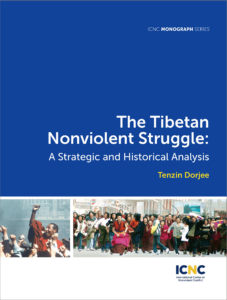
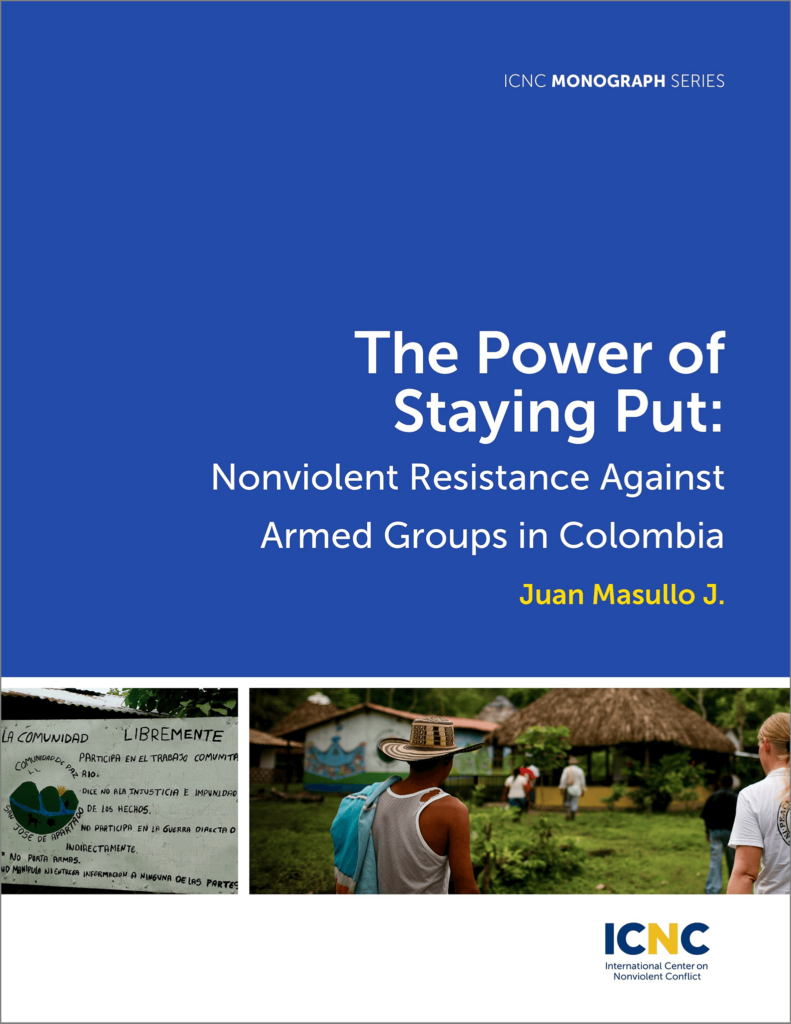 By Juan Masullo J., Department of Political and Social Sciences at the European University Institute (EUI)
By Juan Masullo J., Department of Political and Social Sciences at the European University Institute (EUI)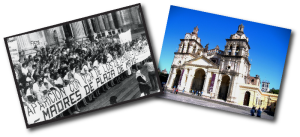

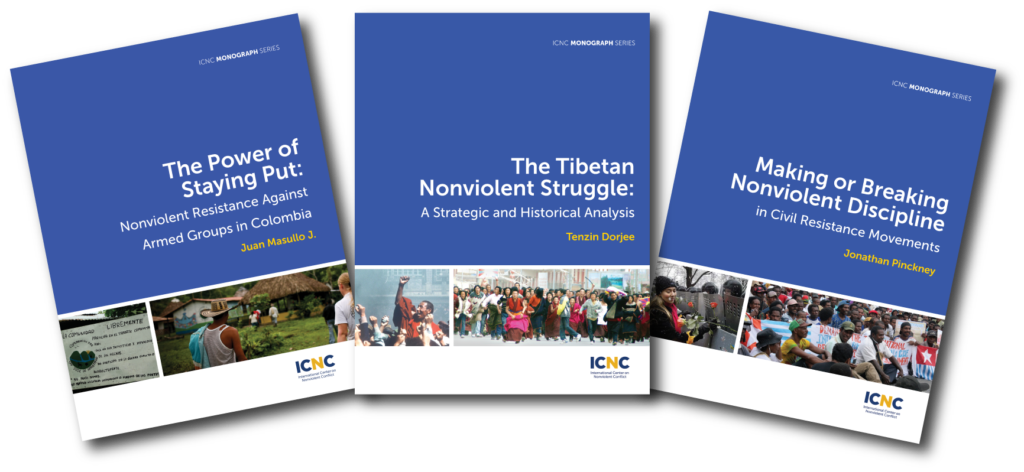
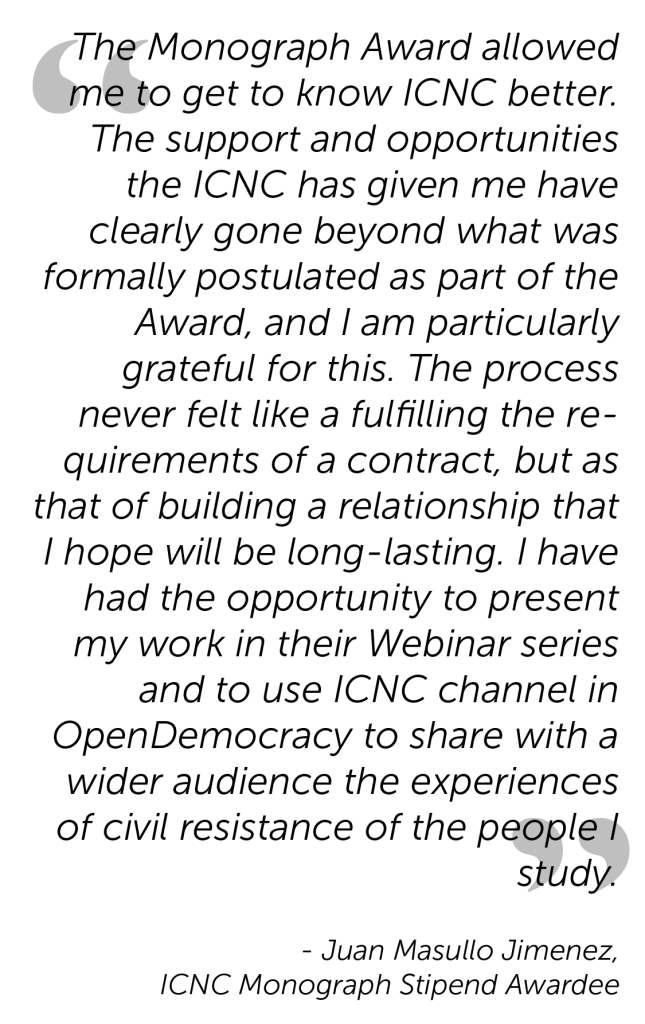
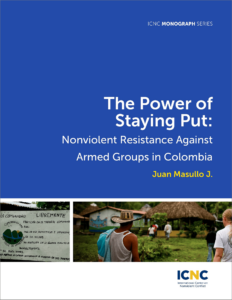 Confronted with civil war, local civilians typically either collaborate with the strongest actor in town or flee the area. Yet civilians are not stuck with only these choices. Collectively defying armed groups by engaging in organized nonviolent forms of noncooperation, self-organization and disruption is another option. This monograph explores this alternative through sustained and organized civil resistance led by ordinary peasants against state and non-state repressive actors in Colombia’s longstanding civil war: the case of the Peace Community of San José de Apartadó.
Confronted with civil war, local civilians typically either collaborate with the strongest actor in town or flee the area. Yet civilians are not stuck with only these choices. Collectively defying armed groups by engaging in organized nonviolent forms of noncooperation, self-organization and disruption is another option. This monograph explores this alternative through sustained and organized civil resistance led by ordinary peasants against state and non-state repressive actors in Colombia’s longstanding civil war: the case of the Peace Community of San José de Apartadó.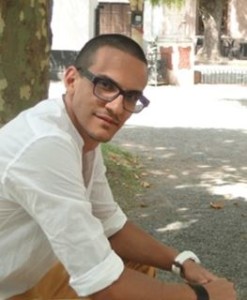
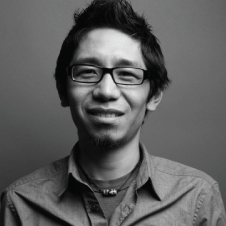
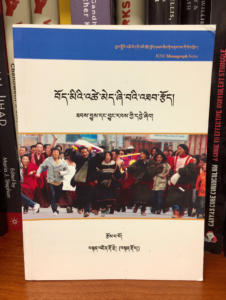
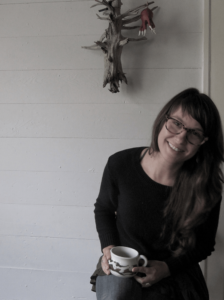
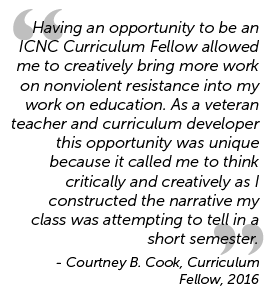
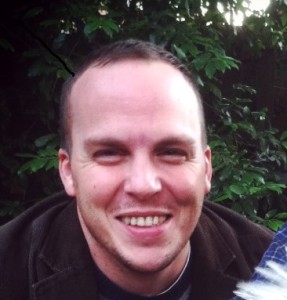
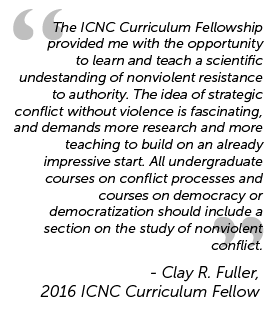

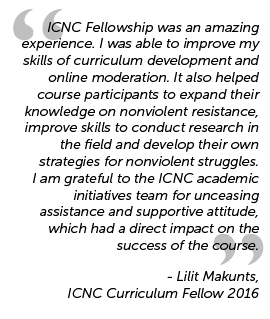
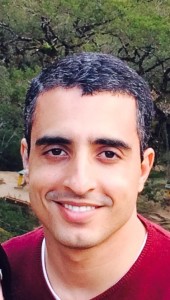
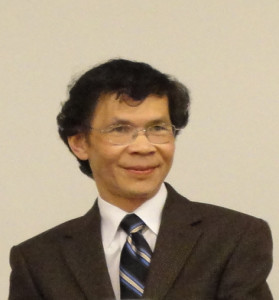

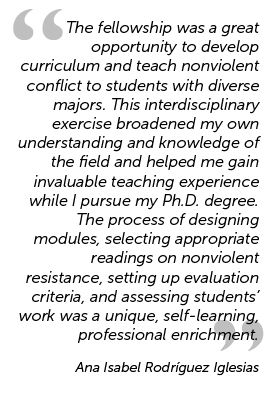

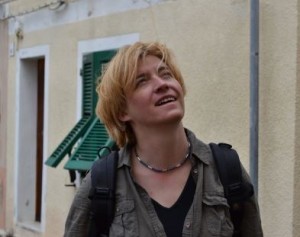
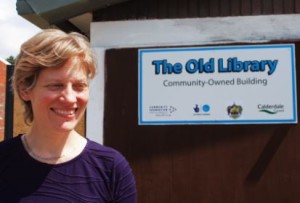

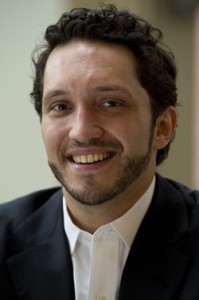
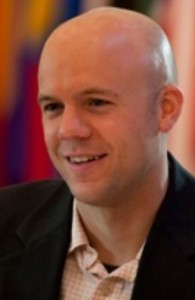
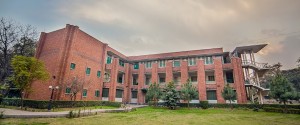 This seminar aims to facilitate learning and teaching on basic themes in civil resistance studies. This course provides a foundation knowledge on civil resistance, including its history and commonly employed strategies. It discusses topics such as Pakistan’s nonviolent history, Abdul Ghaffar Khan, nonviolent strategies against violent extremism, and the role of Islam and civil resistance. The course examines challenges and opportunities for nonviolent mobilization and campaigns, drawing on lessons from the region. Finally, the course discusses how to teach and train young people in the field of civil resistance.
This seminar aims to facilitate learning and teaching on basic themes in civil resistance studies. This course provides a foundation knowledge on civil resistance, including its history and commonly employed strategies. It discusses topics such as Pakistan’s nonviolent history, Abdul Ghaffar Khan, nonviolent strategies against violent extremism, and the role of Islam and civil resistance. The course examines challenges and opportunities for nonviolent mobilization and campaigns, drawing on lessons from the region. Finally, the course discusses how to teach and train young people in the field of civil resistance.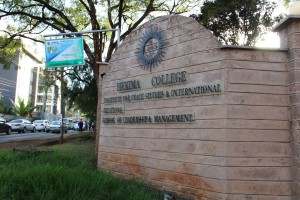 This seminar aims to provide a general introduction to civil resistance, examining its history and common misconceptions. It discusses movement formation as well as effective strategies and tactics commonly used in nonviolent campaigns. Other topics include mobilization, repression & backfire, and the roles of women and external actors. A session in the program also included case studies while looking into contemporary nonviolent campaigns in West Africa and the challenges, opportunism, and impact associated with them.
This seminar aims to provide a general introduction to civil resistance, examining its history and common misconceptions. It discusses movement formation as well as effective strategies and tactics commonly used in nonviolent campaigns. Other topics include mobilization, repression & backfire, and the roles of women and external actors. A session in the program also included case studies while looking into contemporary nonviolent campaigns in West Africa and the challenges, opportunism, and impact associated with them.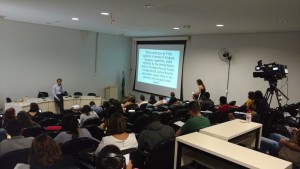 This is a multidisciplinary seminar designed to facilitate learning on the part of participants. The goal of the course is to offer an introduction to the field of civil resistance studies and analyze the driving ideas behind it, discussing various case studies, tactics, and research materials.
This is a multidisciplinary seminar designed to facilitate learning on the part of participants. The goal of the course is to offer an introduction to the field of civil resistance studies and analyze the driving ideas behind it, discussing various case studies, tactics, and research materials.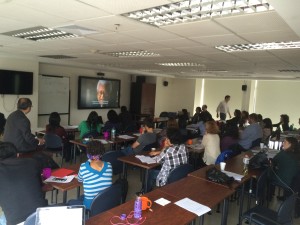 This course provides general introduction to the field of civil resistance, explore different understandings of political power in society with regard to the practice of organized, mass-based civil resistance and discuss why civil resistance can be an effective force for bringing about a significant political change.
This course provides general introduction to the field of civil resistance, explore different understandings of political power in society with regard to the practice of organized, mass-based civil resistance and discuss why civil resistance can be an effective force for bringing about a significant political change.
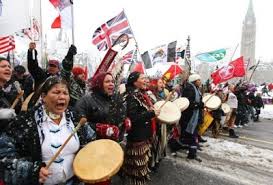


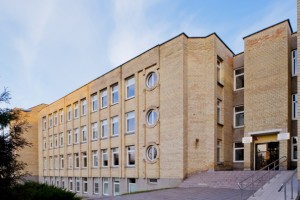
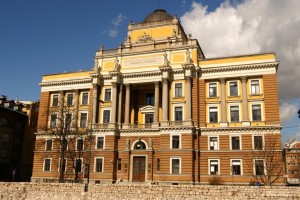
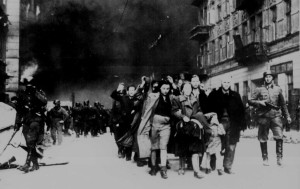

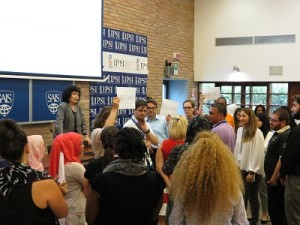
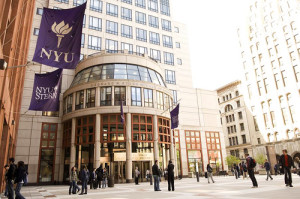


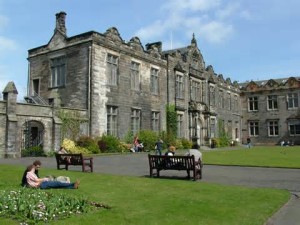

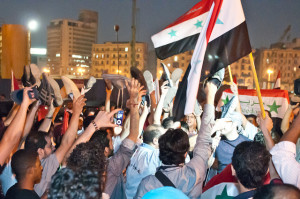
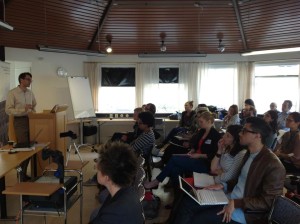

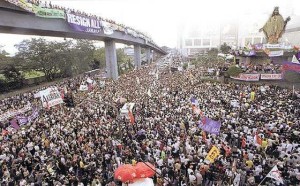
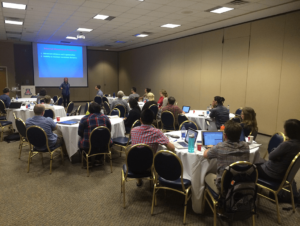 This participatory short course was designed to provide a multi-disciplinary perspective on nonviolent, civilian-based movements and campaigns that defend and obtain basic rights and justice around the world – from Zimbabwe to West Papua, Mexico to China, and throughout the Middle East-North Africa region. Historically, political change in countries that curtail freedom and ignore international human rights norms has been difficult to achieve. Violent revolution or the use of armed force by external actors is typically seen as the primary means of overcoming oppression. Yet people power, relying on a variety of methods of nonviolent action, has been used for this purpose for well over a century in different parts of the world, by different peoples and societies, in different cultures and political systems, and with some impressive results as well as some apparent failures. Furthermore, countries that experience bottom-up, civilian-based resistance are known to have a better track record of successful democratic transitions than the states that initiated their systemic transformation after a protracted civil war, or due to top-down, elite-to-elite negotiations or external military interventions.
This participatory short course was designed to provide a multi-disciplinary perspective on nonviolent, civilian-based movements and campaigns that defend and obtain basic rights and justice around the world – from Zimbabwe to West Papua, Mexico to China, and throughout the Middle East-North Africa region. Historically, political change in countries that curtail freedom and ignore international human rights norms has been difficult to achieve. Violent revolution or the use of armed force by external actors is typically seen as the primary means of overcoming oppression. Yet people power, relying on a variety of methods of nonviolent action, has been used for this purpose for well over a century in different parts of the world, by different peoples and societies, in different cultures and political systems, and with some impressive results as well as some apparent failures. Furthermore, countries that experience bottom-up, civilian-based resistance are known to have a better track record of successful democratic transitions than the states that initiated their systemic transformation after a protracted civil war, or due to top-down, elite-to-elite negotiations or external military interventions.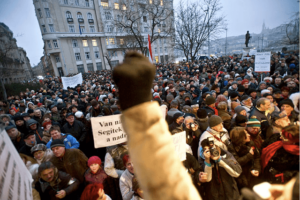 This course was designed to provide an in-depth and multi-disciplinary perspective on civilian-based movements and campaigns that defend and obtain basic rights and justice around the world – from Egypt to Russia, from Zimbabwe to West Papua. Civil resistance, relying on a variety of methods of nonviolent action, has been used for this purpose for well over a century in different parts of the world, by different peoples and societies, in different cultures and political systems, and with impressive results as well as some apparent failures.
This course was designed to provide an in-depth and multi-disciplinary perspective on civilian-based movements and campaigns that defend and obtain basic rights and justice around the world – from Egypt to Russia, from Zimbabwe to West Papua. Civil resistance, relying on a variety of methods of nonviolent action, has been used for this purpose for well over a century in different parts of the world, by different peoples and societies, in different cultures and political systems, and with impressive results as well as some apparent failures.

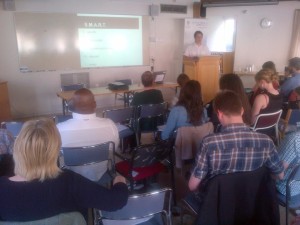
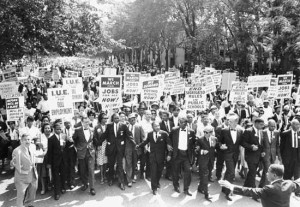
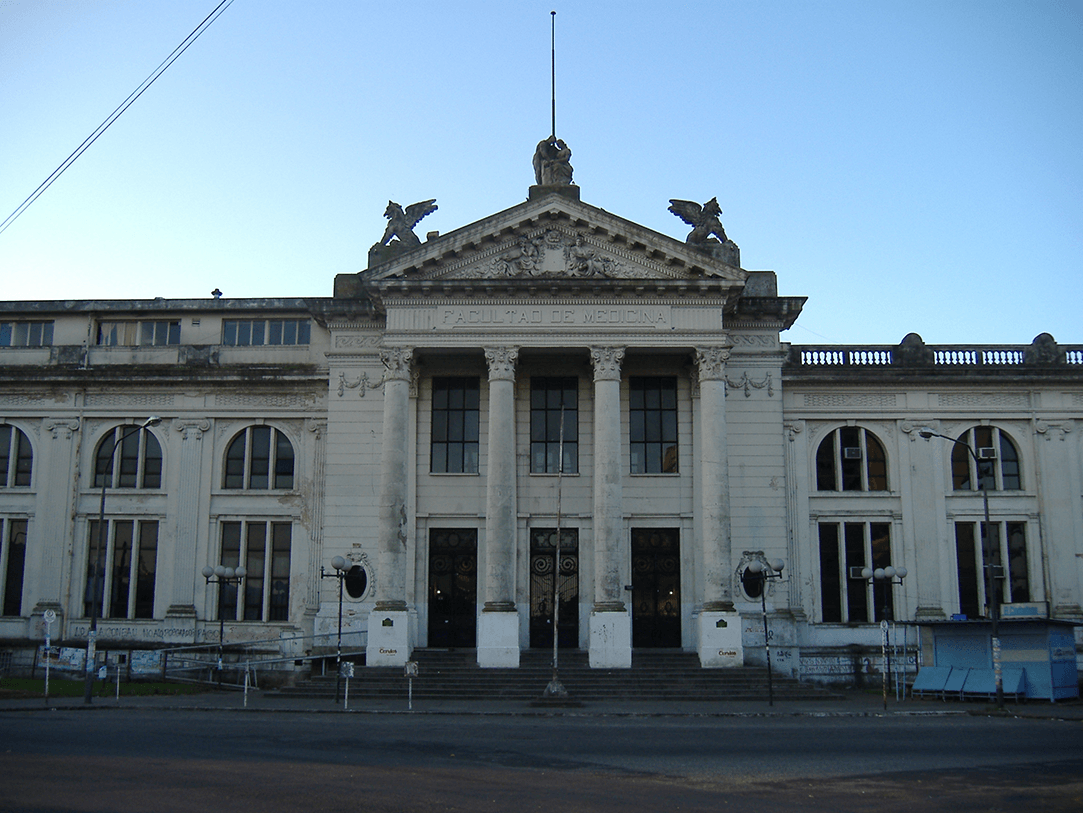
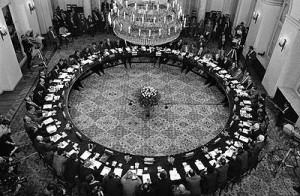
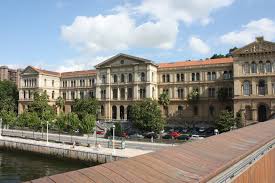


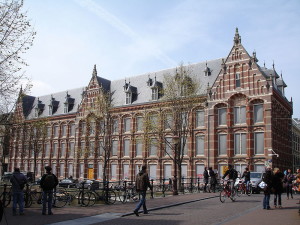
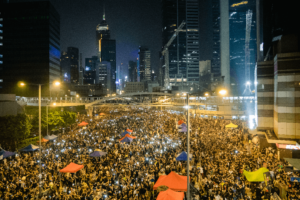 This ICNC course addressed the void of academic study on civil resistance as a tool for ordinary people to achieve basic rights and justice, despite a long history of the practice of civil resistance and strategic nonviolent conflict that goes back at least to the eighteenth century. The course covered numerous topics that contribute to the practice and strategy of nonviolent conflict including third part actors, security defections, social media, and democratic transition.
This ICNC course addressed the void of academic study on civil resistance as a tool for ordinary people to achieve basic rights and justice, despite a long history of the practice of civil resistance and strategic nonviolent conflict that goes back at least to the eighteenth century. The course covered numerous topics that contribute to the practice and strategy of nonviolent conflict including third part actors, security defections, social media, and democratic transition.

